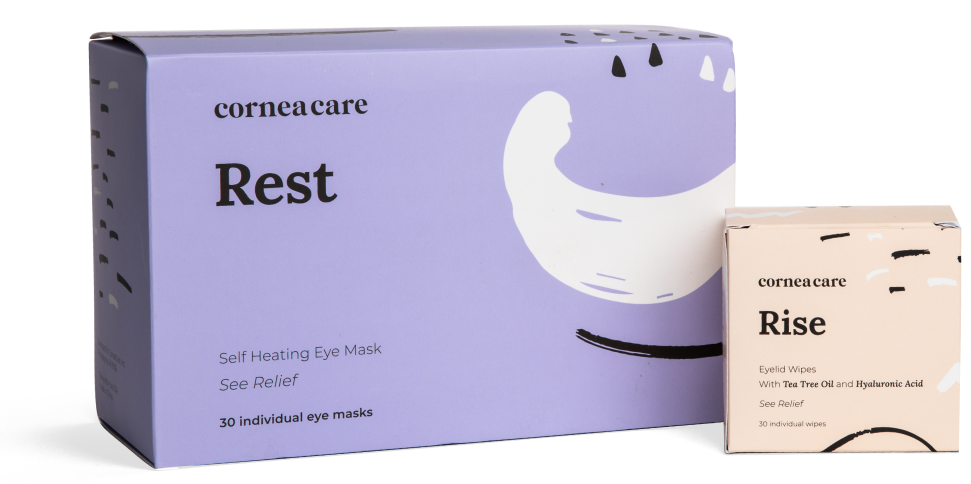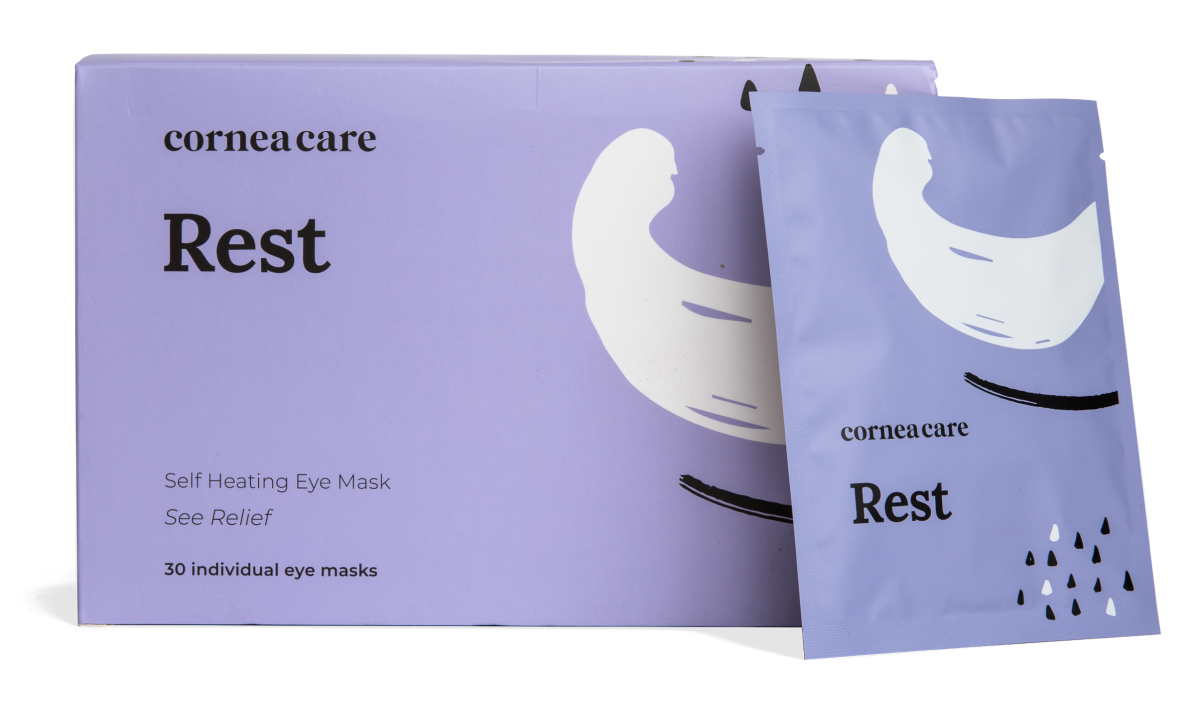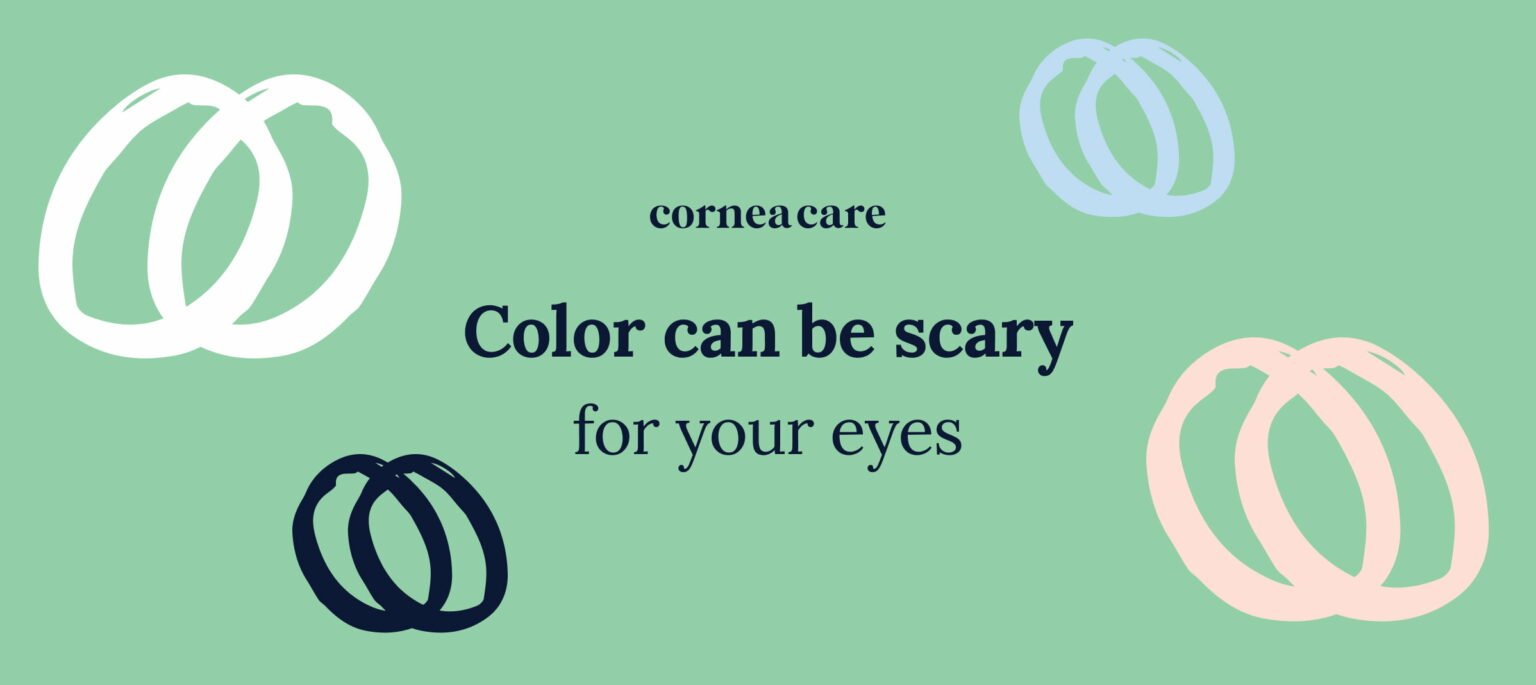Whether you want to change your look for a special occasion or to enhance your Halloween costume, colored contact lenses can seem fun and harmless. However, too often that’s not the case.
Casually picking up colored contact lenses without a prescription from your eye doctor can be a decision that leads to long term damage to your eyes, and even blindness.
Learn the risks of wearing colored contact lenses and how to do it safely.
Key Points
- Safe colored contact lenses require a valid prescription from an FDA approved retailer.
- Non-prescription costume lenses can cause eye pain, eye injuries, infections, and even blindness.
- Start with a visit to your eye doctor if you are interested in colored contact lenses.
What are Colored Contact Lenses?
Colored contact lenses are sometimes used for a special occasion. They may be part of a Halloween costume, for cosplay, or in film or theater productions. Still other contact lens wearers choose colored contact lenses to change their eye color on an everyday basis.
Costume contact lenses, also known as cosmetic or decorative contact lenses, are contact lenses that change how the color of your eyes look. Different types of colored contact lenses can also change how the shape of your pupil looks. They can either offer vision correction or not.
Is it Safe to Wear Non-Prescription Colored Contacts?
Theatrical contact lenses, cosplay lenses, or Halloween costume lenses are made with paints and pigments that make the lenses thicker. This can cause colored contact lenses to be less breathable as less oxygen gets through to the eye.
Avoid over-the-counter (OTC) lenses labeled “one size fits all” or “no need to see an eye doctor”. Proper colored contact lenses that are safe for use will be sized for your specific eyes. Non-prescription, counterfeit colored contact lenses can damage or infect your eyes.

Foundation
Eyelid Hygiene Plan 2
Perfect for eye dryness, burning, itching, crusting/flaking of eyelashes and inflamed eyelids. Free shipping 📦.
Try today - $45
Risks Associated with Colored Contact Lenses
You’re taking a big chance if you buy colored contact lenses that are not FDA-approved. Costume contacts can cause eye pain and other injuries.
If you purchase colored lenses from a retailer who isn’t regulated by the FDA, you may get lenses in the wrong size or shape for your eyes. The lenses you receive may be contaminated due to unsafe, low quality packaging.
In a study of more than 600 women, 60% of costume contact lens wearers complained of pain, redness, swelling, and itchy eyes. The researchers found that 1 in 4 participants used non-prescription contacts purchased through costume shops, novelty stores, and unauthorized salons. According to the study, many with eye injuries caused further risk to their vision by failing to seek medical treatment.1
In a 2017 survey of eye care professionals it was determined that the group with the highest risk of eye injuries from wearing costume contacts were people aged between 18 and 25. More than a third of all injuries were reported by new lens wearers who were uninformed about using colored lenses safely.2
The most common injuries from non-prescription colored contact lenses are eye infections.3 According to the FDA’s analysis of 300 counterfeit lenses, harmful bacteria is found in more than half of all non-prescription costume contact lenses purchased.4
Another study of contact lens wearers in 2018 determined that over 85% of participants practiced unsafe handling behavior. This put them at risk for serious eye infections caused by contact lens use.5
When your contact lenses have not been sized by an eye doctor, they can cause corneal abrasions, corneal ulcers and even infectious keratitis, a painful bacterial infection that can lead to blindness.6,7
Such eye injuries can require antibiotic eye drops and even surgery such as a corneal transplant.
Colored Contact Lens Safety Tips
It is possible to safely wear colored costume contact lenses. The first step is to see your eye doctor.
Whether you go for a natural look or want to change the color of your eyes, remember that contact lenses are medical devices. As such, it is important to commit to proper usage and care when you decide to wear contact lenses or any types of colored contacts.
When used unsafely, your contact lenses can increase your risk factor of developing an eye infection.
Your eye care professional can determine whether you are a good candidate for contact lenses and if so, will measure your eyes for a proper fit and give you instructions for safe use.
Follow these tips for safe use of colored contact lenses:
- Have a complete eye exam with a licensed eye care professional (optometrist or ophthalmologist).
- Get a valid prescription that details a brand name, lens measurements and expiration date.
- Choose only reputable retailers who require a prescription to buy colored FDA approved contact lenses.
- Always follow the safety instructions for your prescription colored contact lens including how to clean, disinfect and wear your lenses.
- Never borrow or share contact lenses with anyone else.
- Keep appointments with your eye care provider for regular eye exams.

Rest
Warm Compresses
Perfect for eye dryness, fatigue, tearing, and puffiness of the eyelids. Free shipping 📦.
Try today - $30
Colored Contact Lenses and Dry Eye Disease
According to the CDC, over 45 million Americans wear contact lenses.8 Many patients who require vision correction, prefer contact lenses because they offer more convenience than glasses.
However, contact lenses can become very uncomfortable for those who develop dry eye disease. Dry eye disease is already a common condition among both contact lens wearers and non-lens wearers.
Contact lenses can lead to dry eye disease by blocking oxygen flow to the cornea which creates tear film instability. The lenses can also absorb the fluid from your tears to stay lubricated, leaving your eyes feeling dry and uncomfortable.
One study found that contact lens wearers had three times greater risk of experiencing symptoms of dry eye disease than people who are not contact lens wearers.9
Eye doctors hear frequent complaints of dry eyes from their patients who wear contact lenses. While dry eye disease is common among both contact lens wearers and non-wearers, patients who wear lenses experience more severe discomfort of dry eye symptoms including redness, pain, and other irritations.
Wearing regular contact lenses can increase your risk of developing symptoms of dry eye diseases. Add in the risks associated with colored contact lenses, and it’s clear that colored contact lenses can pose a risk to your eye health.
If you wish to wear contact lenses, be sure they are by prescription only and well-fitted by your eye doctor (optometrist or ophthalmologist). Avoid wearing lenses for prolonged periods.
To limit strain on your dry eyes, choose glasses over lenses while using digital screens, such as a computer, TV or smartphone.
Putting it All Together
When you want to change your look for a special occasion or for your Halloween costume, start with a visit to your eye doctor. Get prescription lenses that fit properly and follow all the instructions for safe handling.
If you develop symptoms such as redness, swelling, pain or other discomfort, remove your contact lenses immediately and get medical attention. A severe eye infection can sometimes develop quickly and can lead to long term damage or even blindness.
What’s Next
Want to learn more about keeping your eyes safe and healthy? Check out our articles in our Eye Health and Wellness section.



